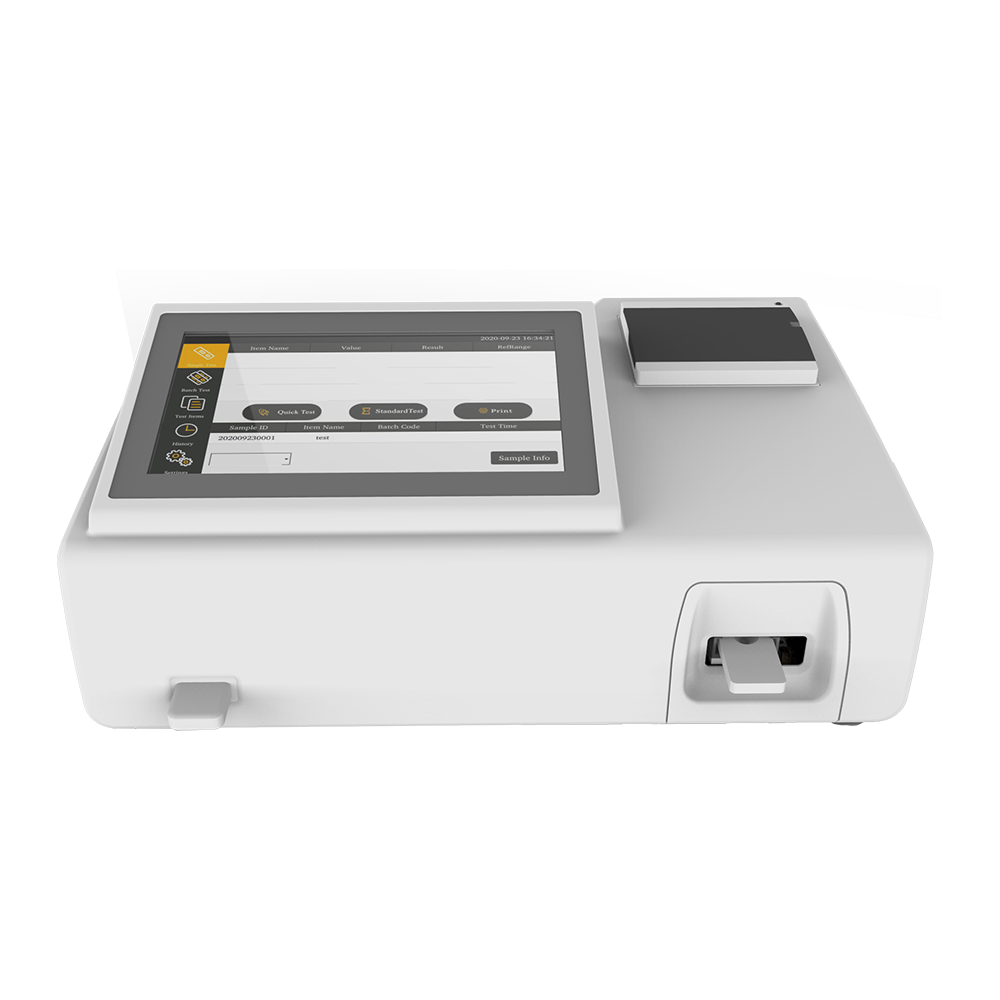Jul 01,2022
Fluorescence Immunoassay Analyzers (FIAAs) are designed to offer high sensitivity and specificity in detecting biomarkers and analytes in various samples. However, sample contamination or interference from other substances can still affect the accuracy and reliability of the results. Here are several strategies and mechanisms through which FIAAs handle these challenges:
1. Use of Specific Antibodies
Antibody Selection: FIAAs rely on specific antibodies that bind to the target analyte with high affinity. This specificity helps minimize the risk of cross-reactivity or interference from other substances in the sample.
High Affinity and Specificity: The choice of antibody is critical to the performance of the assay. Monoclonal antibodies, which are highly specific to the target, are often used to reduce interference from other substances in the sample matrix.
2. Blocking Agents
Blocking of Non-Specific Binding Sites: To reduce background noise from non-specific binding, FIAAs often use blocking agents (such as bovine serum albumin or casein) in the assay. These agents prevent the nonspecific adhesion of sample components to the solid phase, thereby improving the accuracy of results.
Surface Modifications: In some cases, the surface of the assay plate or sensor is modified to enhance antibody binding specificity and reduce interference from non-target molecules.
3. Sample Pre-treatment and Purification
Pre-treatment: Some FIAAs include sample preparation steps that help reduce contamination or interference. This can include processes such as centrifugation, filtration, or dilution to remove particulates or other substances that could cause interference.
Matrix Effects: If the sample matrix (e.g., blood, urine, saliva) contains substances that may interfere with the assay, such as high levels of lipids, proteins, or salts, sample purification steps are performed. These may include the use of immunoaffinity columns, dialysis, or specific reagents designed to clean up the sample before analysis.
4. Use of Internal Controls
Control Samples: FIAAs often include internal controls that are designed to detect or correct for potential sample interference. These controls can be positive or negative and are used to ensure that the system is functioning correctly. If the results of the control sample deviate from the expected values, it may indicate that interference is affecting the assay.
Internal Fluorescent Standards: Some systems incorporate internal fluorescent standards that help differentiate the specific signal from background noise or interference.
5. Calibration and Compensation Algorithms
Signal Compensation: To account for potential interference, some FIAAs are equipped with software algorithms that compensate for variations in sample quality. These algorithms can distinguish between the target analyte’s fluorescence signal and any potential interference based on known properties of the analyte and background noise.
Spectral Discrimination: FIAAs that use multiple fluorophores (in multiplex assays) can differentiate between overlapping fluorescence signals from different analytes or interfering substances by utilizing distinct emission spectra. This helps reduce the impact of interference.
6. Optimization of Assay Conditions
pH and Ionic Strength: The ionic strength and pH of the assay buffer are optimized to minimize the likelihood of sample interference. Certain substances may bind to antibodies or fluorescent tags under specific conditions, so carefully controlling these factors can reduce non-specific interactions.
Temperature Control: Ensuring the assay operates at optimal temperatures helps reduce the possibility of denaturation or other temperature-related interference from sample components.

7. Use of Enzyme Conjugates with Fluorescent Markers
Dual Detection Systems: Some FIAAs combine fluorescent signals with enzymatic markers. Enzyme-labeled detection systems, like horseradish peroxidase (HRP) or alkaline phosphatase (ALP), can amplify the signal and make the assay less sensitive to background interference. The enzyme reaction can be optimized to ensure the fluorescence signal is robust even in the presence of interfering substances.
8. Multiple Wash Steps
Washing Protocols: To reduce the impact of sample contamination, FIAAs typically involve multiple washing steps. These steps help remove excess sample, unbound analytes, and other potential contaminants from the system before the fluorescence measurement is taken. Effective washing is crucial in minimizing interference from nonspecific binding.
9. High-Quality Fluorescence Detection
Enhanced Fluorescence Detection: FIAAs use sensitive photodetectors, such as photomultiplier tubes (PMTs) or charge-coupled devices (CCDs), to capture fluorescence signals with high precision. By using advanced filtering systems, the analyzer can distinguish between the specific fluorescence of the labeled antibody/antigen complex and any background signal
s caused by contaminants.
Noise Reduction: Many systems employ noise-reduction techniques such as signal averaging or time-resolved fluorescence to differentiate between true signals and any interference caused by noise or contamination.
10. Standardization and Regular Calibration
Periodic Calibration: Ensuring that the Fluorescence Immunoassay Analyzer is calibrated regularly helps maintain accuracy and minimizes the effects of potential sample contamination. Calibration ensures that the system is properly tuned to detect the target analyte’s fluorescence signal.
Standard Operating Procedures (SOPs): Strict adherence to SOPs for sample handling, reagent preparation, and assay execution ensures that contamination and interference are minimized throughout the testing process.
11. Integration of Multiplexing and Cross-Reactivity Monitoring
Multiplexing: In multiplex assays, where multiple analytes are detected simultaneously, FIAAs may employ unique fluorophores for each analyte. This allows for cross-validation within the same sample, helping to identify any cross-reactivity or interference from other substances in the sample.
Cross-Reactivity Studies: Extensive validation of antibodies for cross-reactivity to other substances can reduce the potential for interference. If known substances that might interfere with the assay are identified, the antibodies can be fine-tuned or modified to improve specificity.



 Español
Español
 Français
Français
 Deutsch
Deutsch
 عربى
عربى








